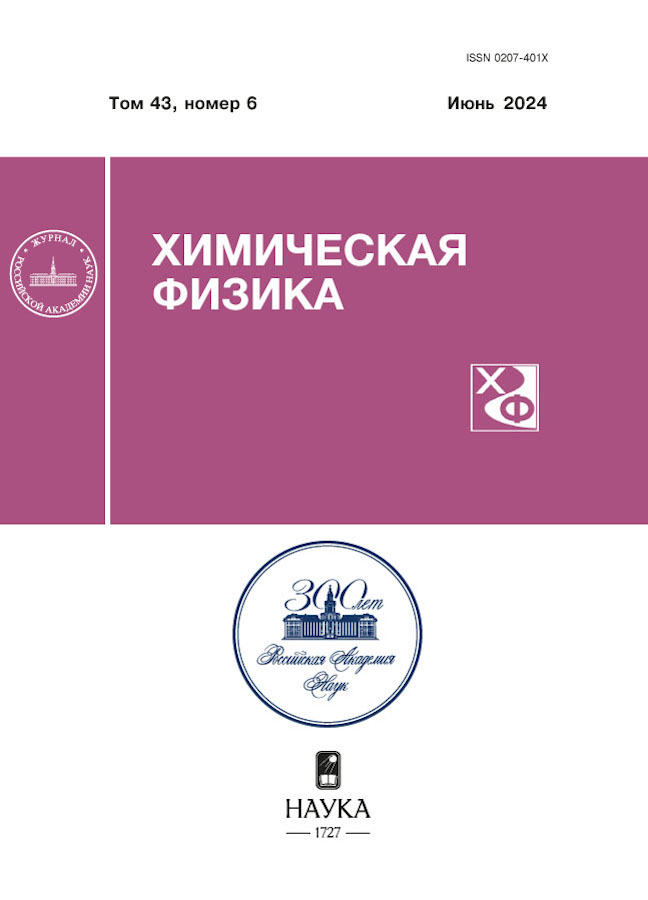Statistical analysis of flux enhancements of energetic electrons in the low-latitudinal ionosphere according to the data from the NOAA/POES and MetOp satellites from 1998 to 2022 years
- Authors: Golubkov M.G.1, Suvorova A.V.2, Dmitriev A.V.2, Golubkov G.V.1,3
-
Affiliations:
- Semenov Federal Research Center for Chemical Physics, Russian Academy of Sciences
- Skobeltsyn Institute of Nuclear Physics, Lomonosov Moscow State University
- National Research Center “Kurchatov Institute”
- Issue: Vol 43, No 6 (2024)
- Pages: 105-116
- Section: Химическая физика атмосферных явлений
- URL: https://kld-journal.fedlab.ru/0207-401X/article/view/674941
- DOI: https://doi.org/10.31857/S0207401X24060117
- ID: 674941
Cite item
Abstract
The intense precipitation of energetic electrons from the Earth’s radiation belt (ERB) is one of the most important sources of ionization in the ionosphere and atmosphere. We have carried out a large-scale statistical analysis of data from continuous low-orbit satellite observations of solar-cycle variations in the flux enhancements of the ERB electrons with energy >30 keV at an altitude of 850 km, acquired from the NOAA/POES and MetOp fleet in the interval from 1998 to 2022. We have found and described basic features of artificial failures in the spaceborn database with high-time resolution measurements in the interval from 2014 to 2022. Data correction was done. It was shown that the annual number of days with the electron flux enhancements increases rapidly within three years after the solar-cycle maximum and reaches its greatest value near the middle of the declining phase of solar activity. Then the event occurrence begins to decrease within an 8-year interval, including the minimum, rising and maximum phases of the solar cycle. The minimum occurrence of the events is achieved at minimum solar activity.
Full Text
About the authors
M. G. Golubkov
Semenov Federal Research Center for Chemical Physics, Russian Academy of Sciences
Author for correspondence.
Email: golubkov@chph.ras.ru
Russian Federation, Moscow
A. V. Suvorova
Skobeltsyn Institute of Nuclear Physics, Lomonosov Moscow State University
Email: golubkov@chph.ras.ru
Russian Federation, Moscow
A. V. Dmitriev
Skobeltsyn Institute of Nuclear Physics, Lomonosov Moscow State University
Email: golubkov@chph.ras.ru
Russian Federation, Moscow
G. V. Golubkov
Semenov Federal Research Center for Chemical Physics, Russian Academy of Sciences; National Research Center “Kurchatov Institute”
Email: golubkov@chph.ras.ru
Russian Federation, Moscow; Moscow
References
- Golubkov G.V., Dmitriev A.V., Suvorova A.V., Golubkov M.G. // Russ. J. Phys. Chem. B 2019. V. 13. P. 874. https://doi.org/10.1134/S1990793119050166
- Frolov V.L., Kulikov Y.Y., Troitsky A.V. // Russ. J. Phys. Chem. B 2022. V. 16. P. 965. https://doi.org/10.1134/S1990793122050190
- Golubkov G.V., Berlin A.A., Dyakov Y.A. et al. // Russ. J. Phys. Chem. B 2023. V. 17. P. 1216. https://doi.org/10.1134/S1990793123050214
- Klimenko M.V., Klimenko V.V., Sukhodolov T.V. et al. // Adv. Space Res. 2023. V. 71. P. 4576. https://doi.org/10.1016/j.asr.2023.01.012
- Bakhmetieva N.V., Zhemyakov I.N. // Russ. J. Phys. Chem. B 2022. V. 16. P. 990. https://doi.org/10.1134/S1990793122050177
- Suvorova A.V., Tsai L.C., Dmitriev A.V. // Planet. Space Sci. 2012. V. 60. P. 363. https://doi.org/10.1016/j.pss.2011.11.001
- Suvorova A.V., Dmitriev A.V., Tsai L.C. et al. // J. Geophys. Res.: Space Phys. 2013. V. 118. P. 4672. https://doi.org/10.1002/jgra.50439
- Suvorova A.V., Huang C.M., Dmitriev A.V. et al. // J. Geophys. Res.: Space Phys. 2016. V. 121. P. 5880.https://doi.org/10.1002/2016JA022622
- Dmitriev A.V., Suvorova A.V., Klimenko M.V. et al. // J. Geophys. Res.: Space Phys. 2017. V. 122. P. 2398. https://doi.org/10.1002/2016JA023260
- Golubkov M.G., Suvorova A.V., Dmitriev A.V., Golubkov G.V. // Russ. J. Phys. Chem. B 2020. V. 14. P. 873. https://doi.org/10.1134/S1990793120050206
- Suvorova A.V., Huang C.M., Matsumoto H. et al. // J. Geophys. Res.: Space Phys. 2014. V. 119. P. 9283. https://doi.org/10.1002/2014JA020349
- Evans D.S., Greer M.S. NOAA Technical Memorandum, Ver. 1.4. Space Environ. Center, Boulder, 2004.
- NOAA/POES Space Environment Monitor [Electronic resource]; https://www.ngdc.noaa.gov/stp/satellite/poes/
- Suvorova A.V., Dmitriev A.V. In: Cyclonic and Geomagnetic Storms: Predicting Factors, Formation and Environmental Impacts, Ed. by V.P. Banks. Nova Sci., New York, 2015. P. 19.
- Suvorova A.V., Geophys J. // Res.: Space Phys. 2017. V. 122. P. 12274. https://doi.org/10.1002/2017JA024556
- Dmitriev A.V., Suvorova A.V., Ghosh S., Golubkov G.V., Golubkov M.G. // Atmosphere. 2022. V. 13. P. 322. https://doi.org/10.3390/atmos13020322
- Suvorova A.V. // Universe. 2023. V. 9. P. 374. https://doi.org/10.3390/universe9080374
- Golubkov M.G., Dmitriev A.V., Suvorova A.V., Golubkov G.V. // Russ. J. Phys. Chem. B 2022. V. 16. P. 537. https://doi.org/10.1134/S199079312203006X
- Selesnick R.S., Su Y.J., Sauvaud J.A., Geophys J. // Res.: Space Phys. 2019. V. 124. P. 5421. https://doi.org/10.1029/2019JA026718
- Suvorova A.V., Dmitriev A.V., Parkhomov V.A. // Ann. Geophys. 2019. V. 37. P. 1223. https://doi.org/10.5194/angeo-37-1223-2019
- Dmitriev A.V., Suvorova A.V., Veselovsky I.S. In: Handbook on Solar Wind: Effects, Dynamics and Interactions, Ed. by H.E. Johannson. Nova Sci., New York, 2009. P. 81. https://doi.org/10.48550/arXiv.1301.2929
- Borovsky J.E., Yakymenko K. // J. Geophys. Res.: Space Phys. 2017. V. 122. P. 2973. https://doi.org/10.1002/2016JA023625
- Ginzburg E.A., Zinkina M.D., Pisanko Y.V. // Geomagn. Aeron. 2023. V. 63. P. 735. https://doi.org/10.1134/S0016793223600546
Supplementary files
















